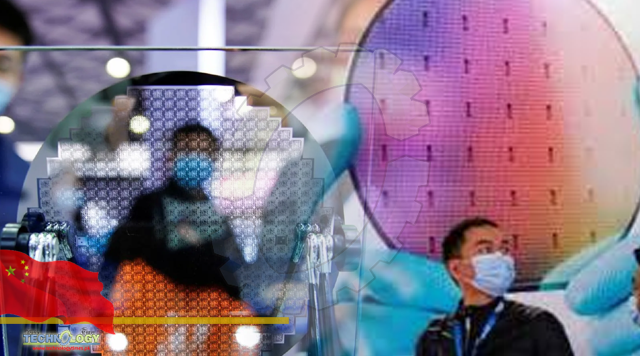The interview-based survey was carried out at Semicon China 2021, a semiconductor technology manufacturing tools exhibition held in Shanghai in March. Nikkei approached greater than 20 producers from mainland China and lined solely the businesses that made concrete replies.

By daiunique
China is going through delays in miniaturizing semiconductors. In a Nikkei survey, many of the seven main Chinese language semiconductor technology manufacturing tools makers that responded mentioned their mainstay merchandise have been these for making 14 nanometer to twenty-eight nm chips, that are two or three generations behind the world’s superior chips. Some mentioned even older technology machines have been their primary merchandise.
Most of the respondents mentioned U.S. sanctions in opposition to China had hindered their procurement of elements and supplies from overseas. Additionally they mentioned utilizing home elements and supplies instead of gadgets from abroad had resulted in decrease yield charges.
“Our mainstay lithography machines are 90 nanometer fashions. Our 28 nm and 14 nm fashions have room for enchancment when it comes to yield charges,” mentioned an engineer from Shanghai Micro Electronics Tools, which is sort of the only real Chinese language semiconductor technology tools maker that has come to commercialize lithography machines.
Though lithography machines are probably the most tough to provide, ASML, the world’s largest lithography machine maker primarily based within the Netherlands, is predicted to commercialize fashions which can be utilized for 3 nm and a pair of nm merchandise.
The interview-based survey was carried out at Semicon China 2021, a semiconductor manufacturing tools exhibition held in Shanghai in March. Nikkei approached greater than 20 producers from mainland China and lined solely the businesses that made concrete replies.
Remarkably, the respondents frankly admitted to the delayed miniaturization of semiconductors. A researcher at Superior Micro-Fabrication Tools (AMEC), which has an edge in etching methods, mentioned, “We’re supplying machines for five nm, however we promote largely [those] for 14 nm and 28 nm.”
AMEC is among the firms that grew to become the primary to listing on the STAR Market, a inventory market opened in Shanghai. The market was established in accordance with Beijing’s ambition for self-sufficiency in strategic sectors corresponding to semiconductors.
AMEC posted gross sales of two.2bn yuan ($340m) for the fiscal 12 months via December 2020, making it a significant semiconductor technology tools maker in China, and can also be forward of different Chinese language firms in miniaturization expertise.
Beijing E-City Semiconductor Know-how Co., one other etching system maker, produced primarily 40 nm methods and a few 28 nm methods, an organization official mentioned.
As China is aiming to extend the proportion of domestically produced semiconductors as a state coverage, “there’s robust demand even for near-general-purpose semiconductor tools,” the official mentioned.
Within the survey, Nikkei obtained replies from seven firms, together with NAURA and Kingsemi in addition to the three above-mentioned firms. Solely AMEC has succeeded in growing a product for five nm cutting-edge expertise, and all the opposite firms mentioned they have been producing 14 nm or older technology merchandise. As a motive, many mentioned they have been inserting greater precedence on substituting microchips produced in China for these produced overseas.
“Semiconductors are usually not used solely in smartphones. There may be demand additionally for 120 nm chips,” an official from Hangzhou Changchuan Know-how mentioned.
The world is experiencing an unprecedented scarcity of semiconductors. This isn’t solely as a result of demand for chips utilized in servers and private computer systems has quickly elevated as telework has unfold amid the COVID-19 pandemic. A chilly snap in Texas within the U.S., water shortages in Taiwan and fires at semiconductor crops have disrupted the provision of microchips.
Most forecasters anticipate it’s going to take at the least a 12 months for the supply-demand circumstances within the semiconductor market to return to regular. Within the present state of affairs, Chinese language semiconductor tools makers have to extend manufacturing rapidly.
For China, nonetheless, an even bigger motive for the semiconductor scarcity is U.S.-led sanctions in opposition to the nation.
“After we are unable to acquire just one core half, our product improvement will undergo an incredible unfavourable influence,” the engineer at SMEE mentioned. “Because it has turn out to be clear over the previous a number of years that it’s tough to introduce expertise from overseas, we must discover options via our personal efforts,” a Kingsemi official mentioned.
The shortages of semiconductor elements, supplies and manufacturing tools have additionally influenced the efficiency of foundries, or contract semiconductor producers. At Semiconductor Manufacturing Worldwide Co., the most important foundry firm in China, 14 nm and 28 nm chips accounted for five.0% of its gross sales within the October-December interval of 2020. The share had fallen sharply from 14.6% in July-September. The semiconductor trade seems to have felt the strongest influence of U.S. sanctions.
U.S. analysis agency IC Insights in January predicted that China’s self-sufficiency ratio for semiconductors could be solely 19.4% in 2025. This was a slight downward correction after the agency in 2020 predicted the ratio would rise to twenty.7% by 2024.
It additionally famous that over half of the ratio was accounted for by mainland China items of abroad producers, corresponding to Taiwan Semiconductor Manufacturing (TSMC), and South Korea’s SK Hynix and Samsung Electronics, with the self-sufficiency ratio that includes solely Chinese language producers estimated at round 10%.
China’s authorities beneath Xi had put massive quantities of subsidies into semiconductor tasks throughout the nation till 2020, however the outcomes of the funding have been restricted, with many tasks failing.
The federal government now seldom mentions the 70% self-sufficiency goal specified by its Made in China 2025 industrial coverage. It won’t be simple for the nation’s semiconductor trade to recuperate from having been its Achilles heel.
Originally published at Daily unique tips